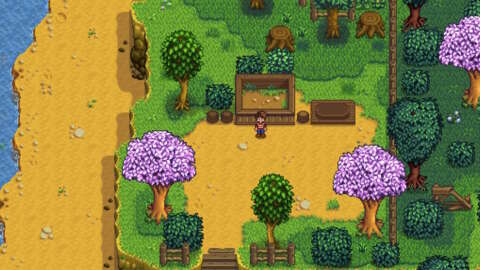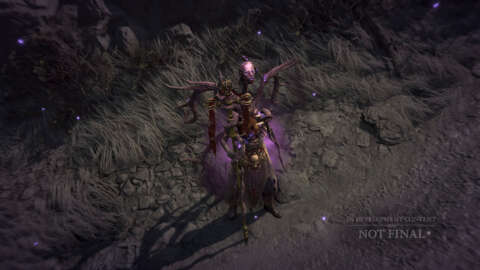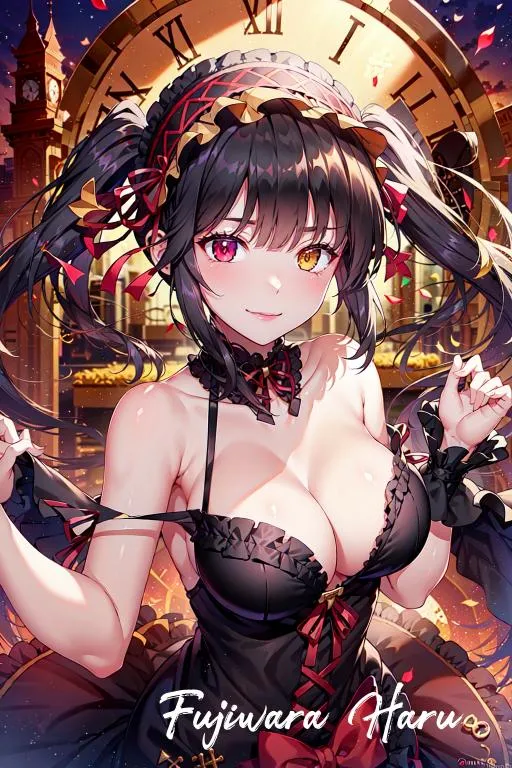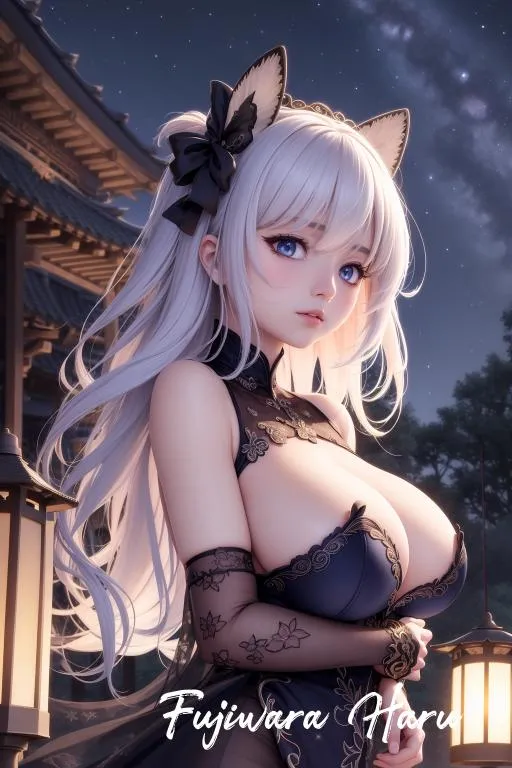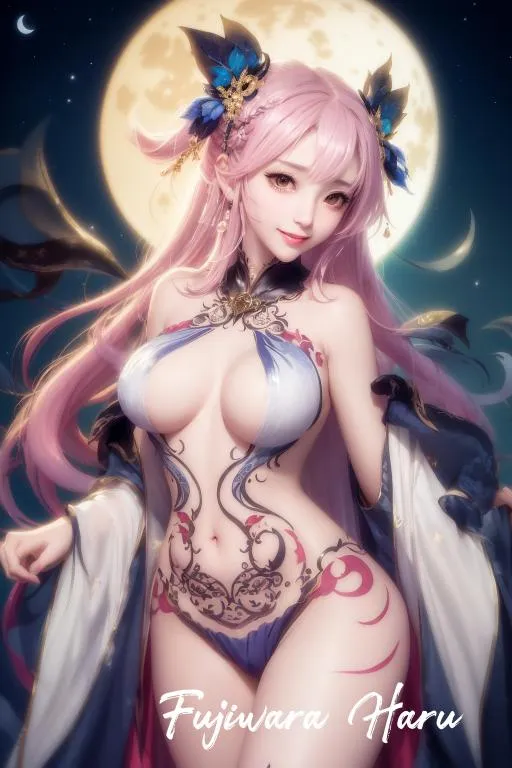When you install a cozy life sim with crafting, farming, fishing, or other tasks, you can expect that you’ll have to do some work. A lot of these games are based around the idea of you playing a character who has to contribute to a system or community, which often involves labor. This isn’t necessarily a bad thing since the grind of a fake job can be a great way to explain why you have to gather resources, make money, form relationships, or construct buildings, but it’s up to game designers to ensure you don’t feel like you’re doing work just for the sake of it. Mineko’s Night Market doesn’t do this. While building a world where a girl has to save a town through work, the developers at Meowza Games forgot that the work has to have a point.
You play as a girl named Mineko who moves with her dad to a remote island that’s fallen on hard times, and it somehow falls on your shoulders to bring more people to your village and to the dying Night Market, which happens once a week and features all manner of vendors and events. More interestingly, you get wrapped up in a mystery surrounding Nikko, a giant cat spirit who may or may not be loose on the island and the secret agents who are on the hunt for him, which is driving even more people off the island.
It does enough to let you know what your goals are and, for the most part, I had a simple 20 hours or so of cutting down trees, breaking rocks, making crafts, and either selling or gifting them. It’s also visually stunning, with bouncy character animations and a gorgeous art style brimming with cute Japanese iconography. Plus there are cats! So many cats! And you can pet them and they’ll purr and follow you around. Unfortunately, any goodwill that the Minkeo’s Night Market builds falls away thanks to long stretches of repetitive grinding that have little payoff.
Can you do me a favor?
When you get to the village, located on an island at the foot of Mount Fugu, you’re immediately thrown into a new life consisting of three things: gathering resources to make stuff to sell, gathering resources to make stuff to gift to your neighbors, and solving the Nikko mystery. There isn’t much time spent on getting to know most of your new neighbors, either. They just start asking you for favors in exchange for recipes so you can go make more stuff. It’s kind of rude, really.
You meet more than a dozen people on the island, but besides a few that show up later as part of a series of quests, they’re too broadly categorized to be interesting. A girl named Hana likes boy bands; Ben is a nerd; Hatty, uh, wears a hat (and is into baseball). They also only have a couple lines of dialogue each, so until you manage to get the item they need they’ll just repeat the same canned words. And since it can be many hours until you’re able to complete these quests, you’ll spend a long time not getting to know any of them.
There are a couple of exceptions to this rule. One is Bobo, a little boy who will be a companion of sorts while you’re going through the main story. He has some of the best dialogue. A lot of his jokes and punchlines have a meta quality to them, like how he suggests you use “combat” to take out the agents infesting the island, even though there isn’t any in Mineko’s Night Market (your plan of sneaking around them is fun too, he eventually says). He also has a mom whose name is Bobo’s Mom (yes, it was very lucky that she would eventually have a son named Bobo. That would’ve been weird otherwise).
Arguably the human character that stands out the most is Miyako, a girl who’s set up as your rival in the same way Gary Oak is to Red in the first Pokemon games. It’s an obvious homage (Miyako even parrots some of the same dialogue, like “smell ya later”) that’s good for a few chuckles and, without spoiling anything, it doesn’t overstay its welcome. Bobo, Bobo’s Mom, and your dad are the others that get significant screentime, but since you spend most of your time grinding for materials, even they don’t participate in enough interactions to stand out a lot. And all your dad really wants is for you to fix the house while he sits in front of the TV all day.
You can do favors for any character, which usually includes crafting or buying certain items. Completing these side quests levels up your relationship, but you don’t get much out of those interactions. Finishing a neighbor’s quest line does give you a conclusion, but they’re unexciting for the most part. In one, I reminded goth teenager Saki (whose primary character trait is “goth”) that her family was pretty great, which I did by giving her items I made. A little dialogue after each successful gift built up her relationship with her family slightly, but not nearly enough to make it feel impactful when she finally has the realization at the end, especially when Mineko really didn’t seem to have any effect on the situation.
In similar games, like Spiritfarer and Cozy Grove, gifting items not only increases your relationship level but also unlocks conversations that flesh out those characters’ backstories and your connection with them. Or in Stardew Valley, where trying to find the best item for certain NPCs is also a minigame in itself, and at the end, you can even get married. In Mineko’s Night Market, all you get are a couple lines, a new crafting recipe, and another favor. And once you’ve run out of recipes to collect (I got them all around halfway through the main story), you just get random gifts like food or gems, both of which just go back into your work. If you max out a quest line with a character, nothing comes of it. They might say hello if you go and talk to them after, but the conclusions are pretty anticlimactic.
That’s just a symptom of a larger issue I have with Mineko’s Night Market. You work so hard to rebuild the island, the Night Market, and to get rid of the threats against Nikko, but there’s a disconnect between your actions as Mineko and the story. There are points where you do have an impact on events, like when you gain access to a new area and have to free trapped cats without getting noticed by agents. This will, in turn, drive the agents out and allow the cats to come back. Otherwise, it feels like Mineko just does things because the genre demands that you constantly need to work. You craft items for people, which makes them happy, and sell stuff, which makes the Night Market happy, but it’s unclear how any of this helps the island’s economy. It just does. It just works to isolate Mineko from the other characters, which is unhelpful in a game that’s partially about building relationships.
The only real personal connection built up here is between Mineko and Nikko. Mineko ends up being the person who protects him from agents and tries to get him home, both because she has to as the main character but also because she feels a kinship with him as somebody who’s also isolated from what they know. This is sort of true, and the way you’re constantly running around doing favors for other people exacerbates those feelings, although I’m not sure if that was purposeful.
Also, the themes don’t quite line up: Mineko just moved away from everything she was familiar with; Nikko is being hunted and is trapped in a place where he constantly has to hide. The parallels between the two’s stories aren’t as similar as the developers seem to think they are. However, this relationship at least moves forward as Mineko opens up new areas and learns more about the island and the agents’ movements. It’s a story where you actually have an impact, so it’s still deeper than just about any other plotline here.
All of this makes a lot of Mineko’s Night Market feel empty and without purpose. Sure, you help Nikko out, but what’s the point of crafting gifts for your neighbors or items to sell in the Night Market? The incremental changes that occur upon completing a night or leveling up a relationship don’t make your tasks any easier or introduce a new exciting element to play around with. It just moves you along to the next week, where you just repeat the same tasks over and over again.
It also feels like you’re just… doing stuff. I mean, you are, but the act of doing in video games has to have some kind of end result. This is especially important when it comes to labor in a cozy slice-of-life sim like this one. In Spiritfarer, making spirits comfortable can help them move on to the afterlife. In Animal Crossing: New Horizons, crafting helps make the island look like almost anything you want and gives you money to pay off your debt. Mineko, by contrast, is put to work so quickly and has few other outlets that she doesn’t feel like much of a character at all. The developers try to get around the banality and cruelty of it by inserting some meta humor that seems to call itself out for arbitrary mechanics and story events, but it just feels like a distraction. It also doesn’t stop the fact that the work will never end.
Working hard or hardly working?
Mineko’s Night Market is a grind that never lets up. Every day, you wake up, travel by bus to one of the resource areas (a forest for gathering wood, a dock for fishing, a cat farm for gathering hairballs, etc), and then come home. You can only go to one per day, so you have to plan your week wisely. It’s a decent attempt to limit the amount of resources you can gather, but it mostly works to pad out the length and to make it even more frustrating when, for one reason or another, you don’t gather as much as you’d like.
Gathering is pretty simple. Besides flowers and hairballs, which are the easiest of the materials to gather, there’s a little timing minigame for each. But while these vary slightly in concept, they all play too similarly. For wood and paper from trees, for example, you have to click once you hit a circle at the bottom of a meter and hold until it hits the other side. The same goes for crafting. Each of the around seven craft types (by my count) has a timing minigame. For flowers, you just have to click where the meter turns green. For sewing, you have to follow a path exactly. They’re not interesting or challenging; each just works as a quick obstacle before getting the item you want and nothing more.
And you’ll need this money for buying food and drinks for energy, and new tools to unlock their corresponding resource areas. Then, you need to get rid of the agents infesting those areas by freeing the cats they’ve captured. This involves running around and either avoiding the agents’ flashlights or pretending to be an errand boy and getting them stuff scattered around the area to distract them. I thought that each level would have its own gimmick, but I soon realized there were limited ideas for variety and it got repetitive quickly. The sequences change slightly once you can control Nikko to solve these puzzles, but the only thing this does is let you release cats in a different part of the level, therefore letting the developers make these areas a bit larger.
The pacing is arguably where Mineko’s Night Market suffers the most. It starts off so quickly, but then slows to a crawl because it can take a while to gather certain resources and earn the cash needed to buy new crafting benches and tools. This means there are long stretches where you’re just grinding and nothing else is happening. No alternate dialogue from NPCs, no new agents arrive to shake things up and, for the most part, you’re not going to progress any other quests enough. You might complete a gift, but then you’ll just get another favor with little fanfare. You also get more energy as you progress through the main story so that you can gather more resources, but you don’t get the third one for at least a dozen hours. And since you can only eat or drink three times a day, you’re really limited in what you can gather and sell, especially during parts of the plot when you need to buy super-expensive tools to unlock those areas.
You only get reprieves on Saturday nights when the Night Market opens, and even then you’re all about your work. You see, the success of the Night Market falls on you, so the more you sell, the more you level up the market. With each level, the market gets more stalls and you get the ability to lay out more items for potential customers to browse. Each week, there’s also a different event — a parade, a play, a race, and a hunt — but they repeat each season. There are four weeks per season, so after the first four markets there aren’t too many surprises left.
It is nice to see the market fill out. You get more stalls, which means access to more items that can potentially help on quests. I was happy to find a flower stall that sold out-of-season flowers, which was super helpful for certain creations. The developers also did a great job changing up the styles of the stalls and their merchants for a lot of variety. Some are brighter, others are more subdued, and they all ooze personality and culture. It’s a shame you don’t get to know some of these merchants, but it’s at least a change of pace.
Freeing the different areas from agents is nice, too, since you potentially get access to new regions to explore, but there’s not a lot to discover once you do. The first few have little puzzles that reward you with a clue in the early parts of the Nikko mystery – but even that drops away after a while. Most of the areas just have their one resource, some cats to pet, and maybe a body of water for fishing. Regardless, any change is good. There is so little of it that any time something different occurred, I was ecstatic.

